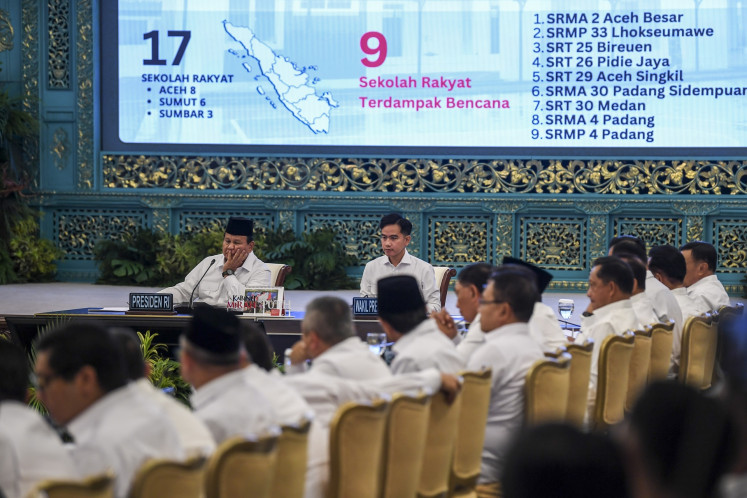Popular Reads
Top Results
Can't find what you're looking for?
View all search resultsPopular Reads
Top Results
Can't find what you're looking for?
View all search resultsGiving cash to poor, rural families can help bring down child marriage
A study of about 1 million girls suggests government programs can be effective in reducing the number of child brides.
Change text size
Gift Premium Articles
to Anyone
Providing cash transfers to low-income families can reduce child marriage rates among girls living in rural communities.
That is what we found in a recent study which looked at the impact of social assistance programs that gave money directly to families.
In 2006, the government started to roll out the Program Keluarga Harapan (family hope program). It consisted of a cash transfer to poor families on the condition that they send their children to school and that expectant mothers show up for prenatal health care appointments. The monthly stipends equate to about 40 percent of total monthly household expenditures in their communities.
Today, the program supports about 10 million households annually and is considered the second-largest such program in lower- and middle-income countries worldwide.
We analyzed data from a poverty-targeting database, which is used to select program beneficiaries based on their income.
Our sample comprised about 1 million girls aged 14 to 17, drawn from all villages where the program operated from 2012 to 2014.
We compared girls who live in households just above and just below the wealth eligibility cutoff for the program. Essentially, this research strategy assumed that these households were very similar, some received the money while others did not.
We found that the program reduced the incidence of child marriages by about 3.5 percent, from 8.7 to 5.2.
About 650 million girls alive today were married as children.
Though most countries have instituted laws prohibiting marriages under the age of 18, child marriages remain common in many regions of the world.
The continued existence of child marriage is worrisome for several reasons. Research has linked child marriage to higher infant and maternal mortality, a higher risk of sexually transmitted diseases, more exposure to domestic violence, reduced decision-making power inside marriage, lower educational attainment and worse health and labor market outcomes.
Since child marriage rates tend to be higher among poorer households, many researchers have argued that income constraints are a main reason why poor households marry off their daughters at very young ages.
Consequently, researchers have explored whether policies that address poverty, including through measures such as giving people cash, can help reduce child marriages.
Previous studies have faced certain empirical challenges as either the cash transfer programs under investigation were set up by NGOs or researchers themselves, thereby providing little insights on the effectiveness of actual government policies, or included sample sizes that were too small.
Our study is among the first to provide large-scale evidence of a cash-transfer program’s success drawn from a conventional, government-implemented social assistance program.
It is also worth briefly commenting on the political context in which social assistance programs are typically embedded. In Indonesia, as everywhere in the world, social assistance programs are regularly under scrutiny for their sizable costs to the government and taxpayer.
Our study suggests that these programs can generate positive benefits well beyond their principal target outcomes, such as tackling poverty or children’s health and education, which should be considered when discussing the cost-effectiveness of such programs.
Because cash transfers also affect other areas such as health and education, the exact pathway in which they reduce child marriages is not known. That is to say, it could be that being in better health and getting more years of education can reduce the chances that a girl will marry.
For example, girls with better access to education can earn higher pay and therefore may not feel the same pressure to marry early. And boys who spend more time in school may move to cities for higher-paying jobs. In that case, fewer single men are around in rural areas, leading to delays in local marriages.
We plan to stay in touch with the government regarding its attempts to further bring down child marriage rates. Likewise, we plan to conduct follow-up studies with the specific social assistance program Program Keluarga Harapan and other government programs to study their effects.
---
Sudarno Sumarto is a visiting Professor at the Center for International Development, Harvard Kennedy School. Jan Priebe is Health Economics team leader at Georg-August-Universität Göttingen. The article is republished under a Creative Commons license.











